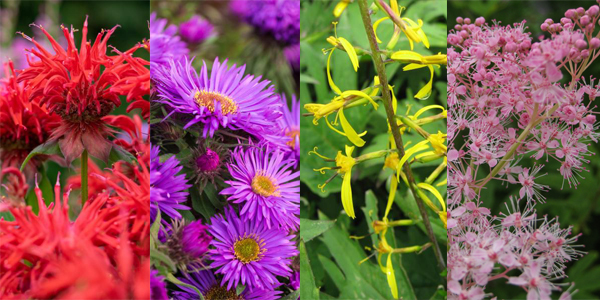Spotlight on Clay Soil
Many visitors to the nursery ask us: ‘What plants can we grow in heavy clay soil?’ So, we thought we would take a closer look at this potentially taxing challenge. You may remember from last month’s soil article that if you squeeze a moist handful of your soil so that it sticks together and you can then form it into a sausage shape, then your soil probably contains more than 25% clay. This type of soil can be slow to warm up in spring and difficult to cultivate; sticky in winter but setting like concrete in summer. So why is it like this and just what is clay anyway?
Well clays are very fine mineral particles less than 2 microns in size - too tiny to see with the naked eye or even most optical microscopes. Clays are generally formed through rock weathering processes and consist of a range of magnesium, aluminosilicates some of which also contain iron, sodium, potassium and calcium. They all absorb and retain water which is a useful property to gardeners. The ideal clay content for a friable loamy soil is between 8% and 25%. Less than 8% clay content and the soil takes on the characteristics of larger particle sized sands and silts within it.
Heavy clay soils retain water and suffer from poor drainage. Traditional solutions range from working in grit or the excavation and installation of French drains plus replacement of the existing soil with new topsoil, which can be very expensive. Some gardeners also try treating their soil with improvers such as Lime or Gypsum, the science of which we will look at in a future article.
We would, however, recommend regular mulching with organic matter such as a good compost, or ‘well-rotted manure’ and let the worms do the hard work for you opening up the soil. This popular No-Dig method has much to recommend it and Melcourt “Farmyard” is excellent for this purpose.
So to answer our visitors' question here are some herbaceous plants which you could try if your soil is on the heavy side of perfect. If individual cultivars are out of stock now, keep checking the website as more become will be ready for planting in a few weeks time.

EUTROCHIUM (known formerly as EUPATORIUM)
